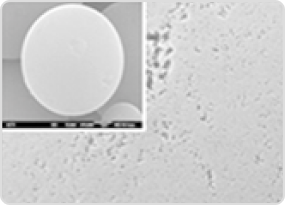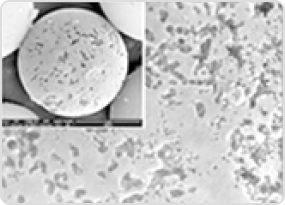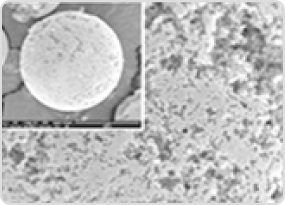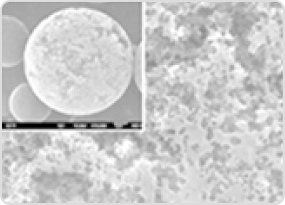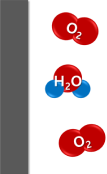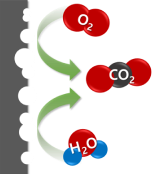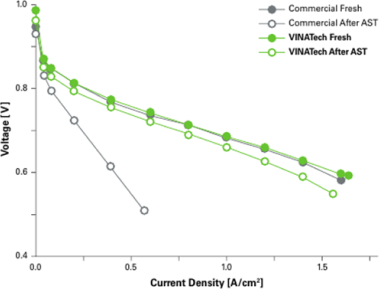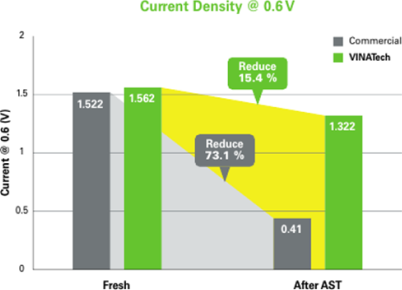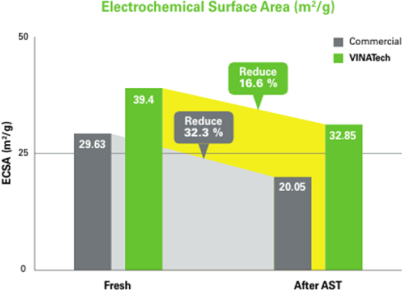Fuel Cell
We have established a value chain for the key materials and components of hydrogen fuel cellsbased on patented carbon materials. Using our own technology, we
are the only ones in the world to batch manufacture supporter-catalyst-MEA. Additionally, we are applying this technology to the mass production of deodorizers.
are the only ones in the world to batch manufacture supporter-catalyst-MEA. Additionally, we are applying this technology to the mass production of deodorizers.
- VINATech has own mass production technology by commercializing carbon support based on carbon control technology.
- The supporter is a key material for fuel cell catalysts, and the characteristics of the supporter greatly affect the efficiency and durability of the fuel cell. VINATech has successfully commercialized its independently developed carbon control technology and is currently in mass production supply. We are pushing for the application and commercialization of various technologies including the secured carbon surface/shape control technology, carbon revival technology, and carbon compounding technology, and are in the process of developing a carbon supporter that can further enhance the efficiency and durability of fuel cells through continuous development.
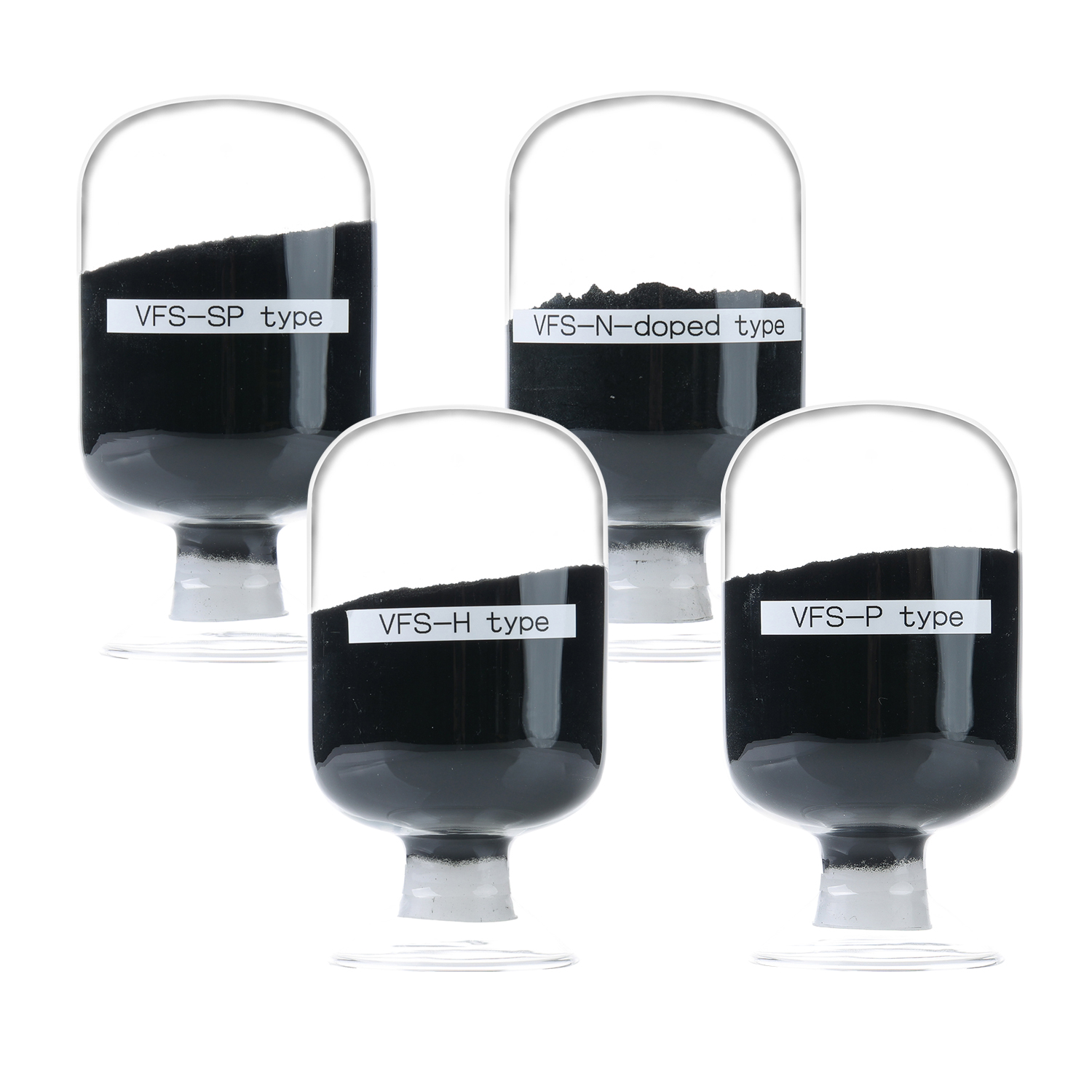
- VINATech Carbon
Control Technology -
Carbon revival technology
- Technology for controlling specific surface area through the activation of carbon black
Carbon surface/shape control technology
- Technology to control carbon surface/shape through high-temperature graphitization treatment

- Fuel Materials
-
Improved Crystalline Properties Decrease d002
Increase Lc002 Eliminate Inter-layer Coupling Acid Processing : Expose edges
Thermal Processing :
Rearrangement
Carbon surface/shape control technology
- Technology to control carbon surface/shape through high-temperature graphitization treatment
-
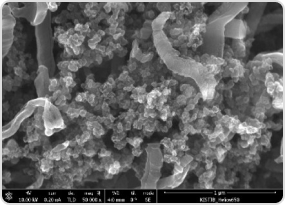 SEM
SEM
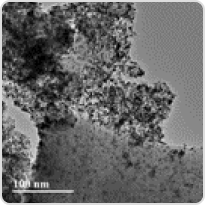 TEM
TEM

Heteroatom doping technology
- Improvement of performance and durability of carbon supporters through doping treatment using heteroatoms
-
BEFORE doping of heterogeneous element

-
AFTER doping of heterogeneous element
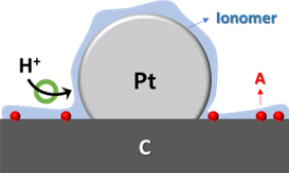
- VINATech Patents in
Carbon Materials -
Patent No. Patent Title Year of Application IPC B82B-003/00 10-0483803-0000 Fiber form nano carbon composition formula 2002 PCT/KR2003/002180 US7470418 B2 Ultra-fine Fibrous Carbon And Preparation Method Thereof 2003 PCT/KR2005/004596
US20090004095 A1Porous Filamentous Nano Carbon And Method Of Forming The Same 2005 10-1774706 Manufacturing method of catalyst support and
fuel cell catalyst including the same2017 US 10,511,029 B2 Method for Manufacturing Catalyst Support and Catalyst for Fuel Cell 2019 10-2569217 Method of manufacturing a fuel cell catalyst supporter
by controlling the nitrogen doping heat treatment temperature2021 VINATech carbon supporters are made of high specific surface area and high crystallinity
carbon black and carbon nanofiber products, which are resistant to carbon corrosion,
thus possessing the advantage of high durability.VINATech supporters have the following characteristics:-
Diversity of shapes
-
High electrical conductivity, high ratio of mesopores
-
High durability (high corrosion resistance, high crystallinity)
-
Uniformly aligned edge surfaces
-
- VINATech Carbon
Support Product -
Division *BET(m2/g) XRD(d002) (nm) Type Structure VFS-P 60~70 0.336~0.338 Carbon Nano Fiber Platelet VFS-H 100~150 0.340~0.345 Carbon Nano Fiber Herringbone VFS-SP 400~800 0.345~0.355 Carbon black Sphere - * 1. BET : The specific surface area in accordance with the theories of Brunauer-Emmett-Teller
- * 2. XRD(d002) : inter-layer distance generated by the diffraction of X-ray
Carbon support SEM/TEM image
-
 VFS-SP SEM
VFS-SP SEM
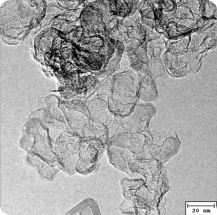 VFS-SP TEM
VFS-SP TEM
-
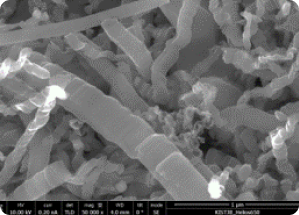 VFS-P SEM
VFS-P SEM
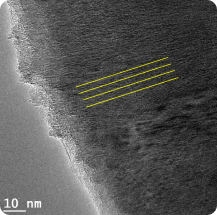 VFS-P TEM
VFS-P TEM
-
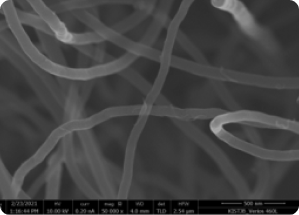 VFS-H SEM
VFS-H SEM
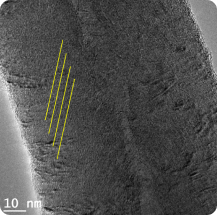 VFS-H TEM
VFS-H TEM
Corrosion resistance comparison carbon support

Principle of carbon corrosion in fuel cell
C + 2H2O CO2 + 4H+ + 4e-(E0=0.207 V)PEMFC MEA_carbon support AST (AST: Accelerated Stress Test)
- *Electrochemical analysis (High voltage durability test) of MEA in Single cell (7-Layers, 25㎠)
Electrochemical analysis MEA in single cell (25㎠)High voltage durability test (1.0 ~ 1.5V, 500mV/s, 5k - 10k cycling)- Test Condition
-
- T Cell : 60℃
- P Cell : An / Ca = 1 bara / 1 bara
- Flow : H2 / N2 = 200 cc / 600 cc
- RH : An / Ca = 100% / 100%
- Cylce : 500 mV/s (1.0 - 1.5V, 5k cycling)
Electrochemical analysis MEA in single cell (25㎠)High voltage durability test (1.0 ~ 1.5V, 500mV/s, 5k - 10k cycling)- Test Condition
-
- T Cell : 60℃
- P Cell : An / Ca = 1 bara / 1 bara
- Flow : H2 / N2 = 200 cc / 600 cc
- RH : An / Ca = 100% / 100%
- Cylce : 500 mV/s (1.0 - 1.5V, 5k cycling)

